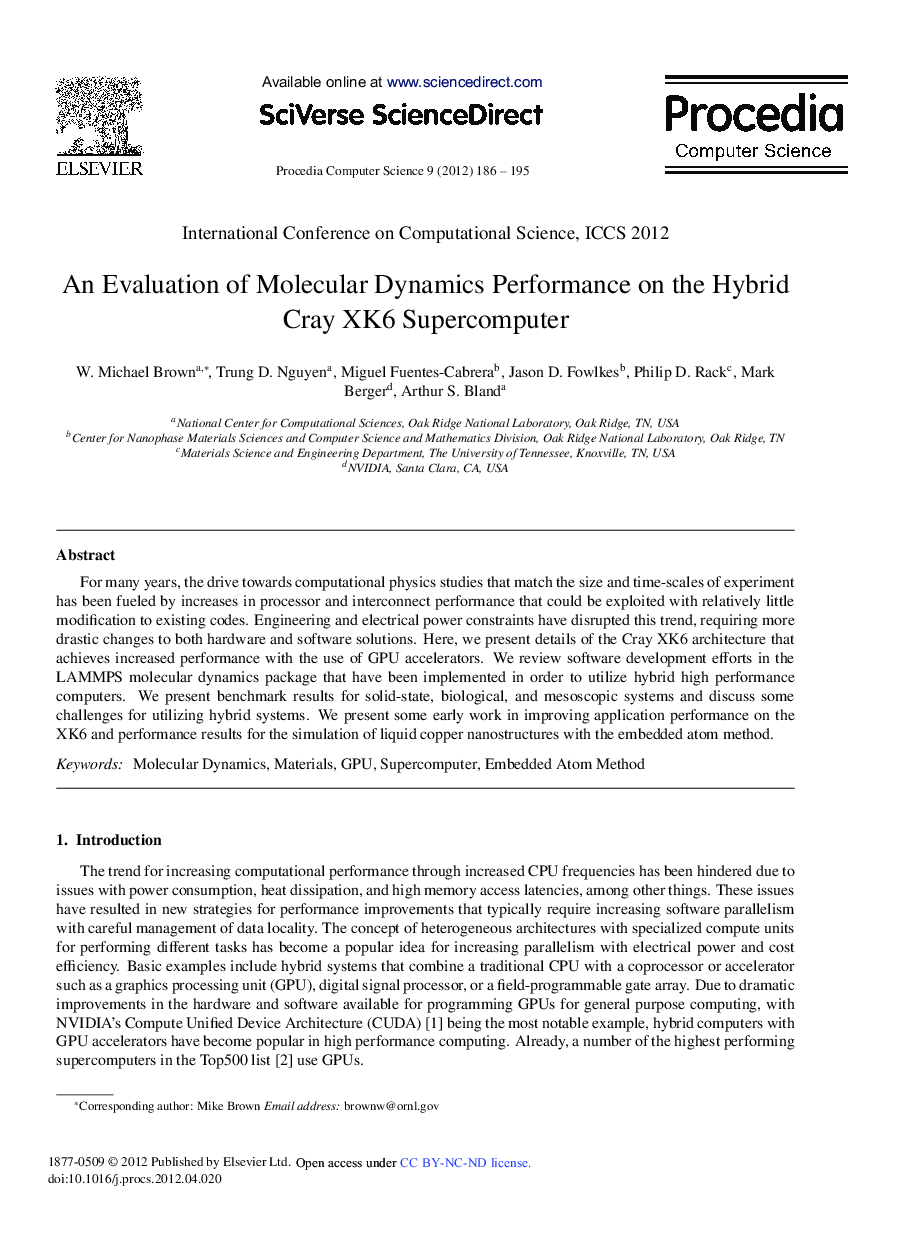| Article ID | Journal | Published Year | Pages | File Type |
|---|---|---|---|---|
| 486683 | Procedia Computer Science | 2012 | 10 Pages |
Formanyyears,thedrivetowards computationalphysics studiesthatmatchthesizeand time-scalesofexperiment has been fueled by increases in processor and interconnect performance that could be exploited with relatively little modification to existing codes. Engineering and electrical power constraints have disrupted this trend, requiring more drastic changes to both hardware and software solutions. Here, we present details of the Cray XK6 architecture that achieves increased performance with the use of GPU accelerators. We review software development efforts in the LAMMPS molecular dynamics package that have been implemented in order to utilize hybrid high performance computers. We present benchmark results for solid-state, biological, and mesoscopic systems and discuss some challenges for utilizinghybrid systems. We present some earlyworkin improving application performance on the XK6 and performance results for the simulation of liquid copper nanostructures with the embedded atom method.
